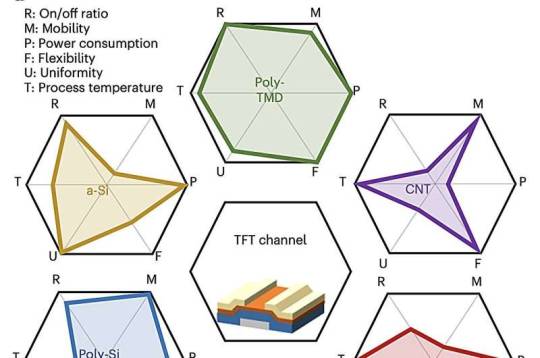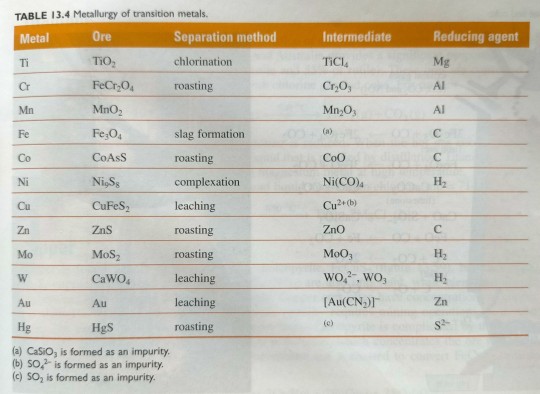#molybdenum
Explore tagged Tumblr posts
Text

OOO THE GIRLIES ARE FIGHTING OOO
#chonny jash#cccc#cj heart#2023 art tag#drawn in 2023 posting in 2024 cos i For Got!#this is try number 3 to get this to post.#tw blood#molybdenum#cccc apau
477 notes
·
View notes
Text
#Personal#Polls#Yay#Iron#Ductile iron#Cast iron#Carbon#Silicon#Sulfur#Phosphorus#Manganese#Nickel#Copper#Molybdenum#Titanium#Magnesium
43 notes
·
View notes
Text

Electronics engineers successfully integrate MoS₂ transistors on a 200 mm wafer
In recent years, electronics engineers have been trying to design increasingly sophisticated transistors that can be scaled down to smaller sizes. Given the limitations of conventional silicon-based field effect transistors (FETs), some teams have been experimenting with alternative designs based on materials with higher electron mobility. Transition metal dichalcogenides (TMDs) are among the most promising materials for the development of scalable FETs, due to their small length and good carrier mobility. One of these materials is molybdenum disulfide (MoS2), a compound consisting of molybdenum and sulfide atoms in a 1:2 ratio. Researchers at Samsung Advanced Institute of Technology (SAIT) and Seoul National University recently demonstrated integration of MoS2 transistors on a 200 mm wafer. Their paper, published in Nature Electronics, demonstrates the scalability of transistors based on MoS2, highlighting their potential for the future development of smaller and flexible devices.
Read more.
#Materials Science#Science#Transistors#Electronics#Transition metal dichalcogenides#Field effect transistors#Molybdenum disulfide#Molybdenum#Sulfides#2D materials
10 notes
·
View notes
Text
Table 13.4 on the next page provides a summary of the chemical species and processes involved in the metallurgy of many transition metals.

"Chemistry" 2e - Blackman, A., Bottle, S., Schmid, S., Mocerino, M., Wille, U.
#book quotes#chemistry#nonfiction#textbook#metallurgy#transition metal#titanium#chromium#manganese#iron#cobalt#nickel#copper#zinc#molybdenum#tungsten#gold#mercury#magnesium#aluminum#carbon#hydrogen#sulfur#chlorination#roasting#slag#leaching#complexation
14 notes
·
View notes
Text
Round 4 - Period 5, D-Block
#polls#periodic table#chemistry#yttrium#zirconium#niobium#molybdenum#technetium#ruthenium#rhodium#palladium#silver#cadmium
3 notes
·
View notes
Text
Round 2 - Matchup 19


Nitrogen 7 (N) - 78% of the earth's atmosphere as the diatomic N2, the most abundant uncombined element.
vs
Molybdenum 42 (Mo) - Sixth highest melting point of any element, and super useful in steel alloys. Enzymes that include Molybdenum are crucial to life.
19 notes
·
View notes
Text
My top 3 chemical element misnomers
Number 3: Technetium Named from technetos, meaning artificial, because it was the first element to be artificially synthesized rather than discovered. We have since found trace amounts of naturally occuring technetium, technically making the name retroactively wrong.
Number 2: Oxygen Named from oxys, meaning sharp, because Lavoisier thought it was the central component in all acids. Oxygen is a central component in many natural phenomena - combustion, corrosion of metals, all life on the planet - but not this one, that’s the one thing it doesn’t do.
Number 1: Molybdenum Named from molybdos, meaning lead. Molybdenum is not lead, that’s a different element, so this name is 100% wrong on every level.
7 notes
·
View notes
Text
Ammonium Hepta Molybdate traders in UAE | palvihemical
Elevate your industrial processes with PalviChemical, a leading Ammonium Hepta Molybdate exporter, trader, and supplier in the UAE. We specialize in providing top-quality Ammonium Hepta Molybdate, meeting the stringent requirements of various industries. As your reliable partner in the UAE, we serve as Ammonium Hepta Molybdate traders, ensuring prompt and efficient delivery of high-grade products. Trust PalviChemical for excellence in Ammonium Hepta Molybdate, catering to diverse industrial needs.
Choose us for innovative solutions and unparalleled service in supplying Ammonium Hepta Molybdate to enhance your processes.
#Ammonium Hepta Molybdate exporter in UAE#Ammonium Hepta Molybdate traders in UAE#Ammonium Hepta Molybdate supplier in UAE#Ammonium hepta molybdate#United Arab Emirates#UAE#molybdenum derivatives#molybdenum#Molybdenum Trioxide#Ammonium Molybdate#Sodium Molybdate
6 notes
·
View notes
Text
MOLYBDENUM: A Mis-named Metal!
This metal was known to the Greeks and Roman's. The word μόλυβδος from which it is derived appears in several ancient texts to denote a metal....except that word does not refer specifically to the metal we now call molybdenum.
μόλυβδος is the ancient Greek for lead, the same as Latin plumbum (ar least we're pretty certain so. Molybdenum ores were originally believed to be from less or lead-based.
It is, as Oliver Sacks calls it, the 'metal of extremes.' It can be a high temperature lubricant or be used in hhigh speed drills.
More about molybdenum in the ancient sources over on BloggusClassicus soon.
3 notes
·
View notes
Text
TRANSITION METALS: ROUND 1 POLL 3


CHROMIUM:
Known for it's shiny, highly polished appearance
The hardest metal
Used in stainless steel
The browser Google Chrome gets its name from this element
According to Spongebob Squarepants, in the future, everything will be composed of or encased in chromium
MOLYBDENUM:
Has an extremely high melting point, over 1000°C (1832°F) higher than iron
#element#periodic table#periodic table of elements#poll#polls#tournament#elements#chromium#molybdenum
3 notes
·
View notes
Text
what if they were a family



3 notes
·
View notes
Text



some doodles!
i do commissions!
#chonny jash#cccc#cj heart#cj mind#cj soul#cccc clouds#molybdenum#stratus#cumulus#nimbus#2024 art tag
320 notes
·
View notes
Text
My left wrist has had a rash that won't quit a couple of times now. Lately, I seem to have also had trouble with any sulphur in my diet at all. I somehow stumbled into reading that molybdenum is essential for sulphur digestion so I grabbed a supplement recommended in a couple of places and tried it for a couple of days. My rash is gone save for some lingering dry skin and my guts are much happier. But I also had a period so my data is compromised by unknowns. I will say the rash has endured several periods without budging so I think this makes a difference. I'm not going to stay on it daily, I'm going to do it every few days because you can overload on it and I learned my lesson after the b6 incident. But let this be a lesson, get all your trace minerals.
0 notes
Text

Molybdenum boride ceramics developed for harsh environment SERS detection
A research team has successfully synthesized three different crystalline phases of molybdenum boride with a strong Raman signal enhancement performance. These findings were published in the journal of Small. The researchers were led by Prof. Huang Zhulin at the Institute of Solid State Physics, Hefei Institutes of Physical Science of the Chinese Academy of Sciences, along with researchers from the University of Massachusetts Amherst. Surface-enhanced Raman scattering (SERS) is a rapid and non-destructive detection method widely used in various fields including trace pollutant monitoring, food safety, chemical catalysis, and molecular fingerprint identification. However, most noble metal SERS materials are costly and exhibit poor physical and chemical stability, especially under extreme conditions such as high temperatures and strong corrosive environments, where SERS enhancement effect diminishes rapidly.
Read more.
#Materials Science#Science#Molybdenum#Borides#Ceramics#Phases#Materials characterization#Materials synthesis
8 notes
·
View notes
Text
Features and uses of different types of crucibles
Crucibles are specialized containers for melting metallic materials at very high temperatures. The molten material is cast into new objects or used to make new alloys (different metals combined in specific proportions). Since crucibles are used to melt materials at high temperatures, the material used to make the crucible must have a higher melting point than the molten metal.

Different types of crucibles are used for different purposes, including research, experimentation, chemical analysis, industrial testing, quality control, and even academia.
ceramic crucible
These crucibles are made of kiln fired clay. They are stable at high temperatures. Ceramic crucibles have been used in metalworking for over 7000 years. Most ceramic crucibles are used in combination with clay and graphite for durability.
Tungsten Crucible
Tungsten crucibles are products made of tungsten metal, which has very high heat resistance. The crucible temperature is as high as 3410°C. The manufacturing process of tungsten crucible is divided into spinning, stamping, forging and sintering. Tungsten is resistant to certain molten metals and metal oxides. Tungsten crucibles are widely used in the technology of growing single crystals from molten corundum; it is also used in electronic technology and thermal vapor deposition technology of various substances.
Clay graphite crucible
Graphite crucibles are mainly used for casting non-ferrous and ferrous metals. This is due to their non-reactivity; they can withstand very high temperatures.
Molybdenum Crucible
Molybdenum is a naturally ductile metal with strong corrosion resistance. Apart from tantalum and tungsten, molybdenum is known to have the highest melting point of the pure elements. Molybdenum crucibles are widely used in heat exchanger method (HEM) processes. They are suitable for melting and solidifying single crystals. The ideal molybdenum crucible has thin walls and excellent creep resistance.
Silicon carbide crucible
Silicon carbide crucibles are highly resistant to extreme temperatures, making them suitable for use in modern laboratories. Additionally, they are not chemically reactive and can be used to provide contamination-free results.
steel crucible
Stainless steel crucibles are made from a single piece of material. They are not as fragile as porcelain crucibles. Steel crucibles are used for low temperature applications and can be used to melt lower melting point metals such as aluminum and zinc. Be aware that steel crucibles will rapidly scale and flake, and will contaminate the final alloy.
Crucibles are made of ceramic materials that can withstand very high temperatures and must have a much higher melting point than the material melted in the crucible. Crucibles can also be made of metals such as tungsten and molybdenum to produce tungsten and molybdenum crucibles.
0 notes
Text
Molybdenum Price | Prices | Pricing | News | Database | Chart | ChemAnalyst
Molybdenum, a silvery-white metal with unique properties like high melting points and corrosion resistance, plays a crucial role in various industries, including steel production, chemical processing, and electronics. The global molybdenum market has been subject to considerable price fluctuations due to a combination of supply-demand dynamics, geopolitical factors, and macroeconomic trends. Recent years have seen shifts in molybdenum prices influenced by evolving global markets, mining operations, and changing end-use industries. Understanding the factors affecting molybdenum prices provides valuable insights into both the challenges and opportunities facing stakeholders within this market.
The primary driver of molybdenum pricing is its extensive use in the steel industry. Approximately 80% of the world’s molybdenum consumption is in steel alloys, including stainless and construction-grade steel, where the metal enhances strength, hardness, and resistance to high temperatures and corrosion. Therefore, molybdenum prices often track with the broader steel market and construction activity worldwide. When demand for steel rises, such as during economic expansion or infrastructure projects, molybdenum prices tend to increase. Conversely, economic downturns or disruptions in the steel industry can lead to softer demand and price declines.
Get Real Time Prices for Molybdenum: https://www.chemanalyst.com/Pricing-data/molybdenum-1613Another critical aspect of molybdenum price trends is supply-side dynamics, with a significant portion of global production concentrated in a few regions. China, Chile, and the United States are major molybdenum producers, often influencing the market when changes occur in production output, mining regulations, or export policies. Supply disruptions, such as mine closures, labor strikes, or stricter environmental standards, can lead to price spikes due to anticipated or actual shortages. For example, if a major mine unexpectedly shuts down for maintenance or due to environmental compliance issues, the resultant decrease in global supply can put upward pressure on molybdenum prices. Furthermore, molybdenum is often mined as a by-product of copper, so fluctuations in copper mining can indirectly affect molybdenum production levels, introducing another layer of volatility.
Geopolitical factors and international trade policies are also key influences on molybdenum pricing. Trade tensions, tariffs, and export bans can disrupt supply chains and affect the availability and cost of molybdenum. For instance, if a leading molybdenum-producing country imposes export restrictions, global prices can surge as buyers seek alternative sources or pay premiums for limited supplies. Similarly, changing trade relationships, such as China's influence as both a major producer and consumer of molybdenum, can have ripple effects across the market. Regulatory measures and geopolitical uncertainties therefore play a critical role in shaping the landscape of molybdenum pricing.
Technological advancements and innovations in end-use industries also impact molybdenum prices. As new applications for molybdenum are discovered, such as in energy-efficient technologies, catalysis, and electronics, demand for the metal could increase, potentially pushing up prices. The renewable energy sector and electric vehicles (EVs) are examples where molybdenum’s properties are increasingly valued, particularly in applications that require high strength, low weight, and heat resistance. The integration of molybdenum in green technologies suggests that sustained interest in these areas could lead to longer-term price support, although the pace of growth in these applications may vary.
Macroeconomic factors such as global economic growth, inflation, currency exchange rates, and commodity market trends further influence molybdenum pricing. Economic growth in major markets like China, the United States, and Europe often leads to higher industrial activity and construction, increasing demand for steel and, by extension, molybdenum. On the other hand, periods of economic uncertainty, recessions, or sluggish growth can weaken demand, leading to lower prices. Exchange rates, especially the strength of the US dollar, can also have an impact; because molybdenum is typically traded in dollars, a strong dollar can make it more expensive for buyers using other currencies, potentially reducing demand.
Environmental and sustainability considerations add another dimension to the molybdenum market. As the mining industry faces increasing scrutiny over its environmental footprint, compliance costs and regulations can influence production levels and prices. Mines that adopt more sustainable and energy-efficient practices may face higher initial costs, potentially passing these costs on to end-users. At the same time, the focus on sustainability and reducing carbon emissions could increase demand for molybdenum in applications that support cleaner energy and technology solutions.
Overall, the outlook for molybdenum prices is shaped by a complex interplay of demand from the steel and high-tech industries, production dynamics in major mining regions, geopolitical events, and broader macroeconomic factors. The increasing demand for green technologies and infrastructure investments could provide a steady source of growth for molybdenum consumption. However, market participants must remain vigilant to the influence of external factors, such as changing trade policies, technological shifts, and economic conditions, which can rapidly alter the supply-demand balance. Molybdenum's status as a critical industrial metal means its market and pricing will likely continue to reflect both the challenges and opportunities of a dynamic global economy.
Get Real Time Prices for Molybdenum: https://www.chemanalyst.com/Pricing-data/molybdenum-1613
Contact Us:
ChemAnalyst
GmbH - S-01, 2.floor, Subbelrather Straße,
15a Cologne, 50823, Germany
Call: +49-221-6505-8833
Email: [email protected]
Website: https://www.chemanalyst.com
#Molybdenum#Molybdenum Price#Molybdenum Prices#Molybdenum Pricing#Molybdenum News#Molybdenum Price Monitor#Molybdenum Database
0 notes